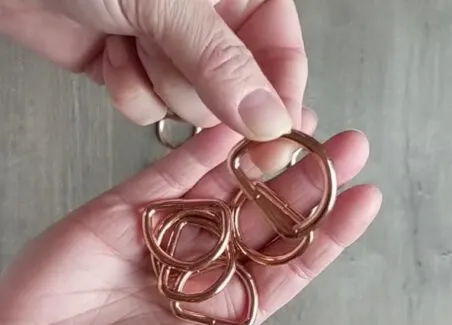O rings and D rings are among the most popular type of metal hardware purchased for craft and professional use. Each comes in a variety of metal types, colors, and finishes. Today, we wanted to take a bit of time to talk about the difference between the various finishes and material types used for O rings and D rings, and the best uses for each type.

What’s the difference between a D ring and an O-ring?
The difference between these ring types is contained in their names – the letter in the name actually represents the shape the ring is formed into.
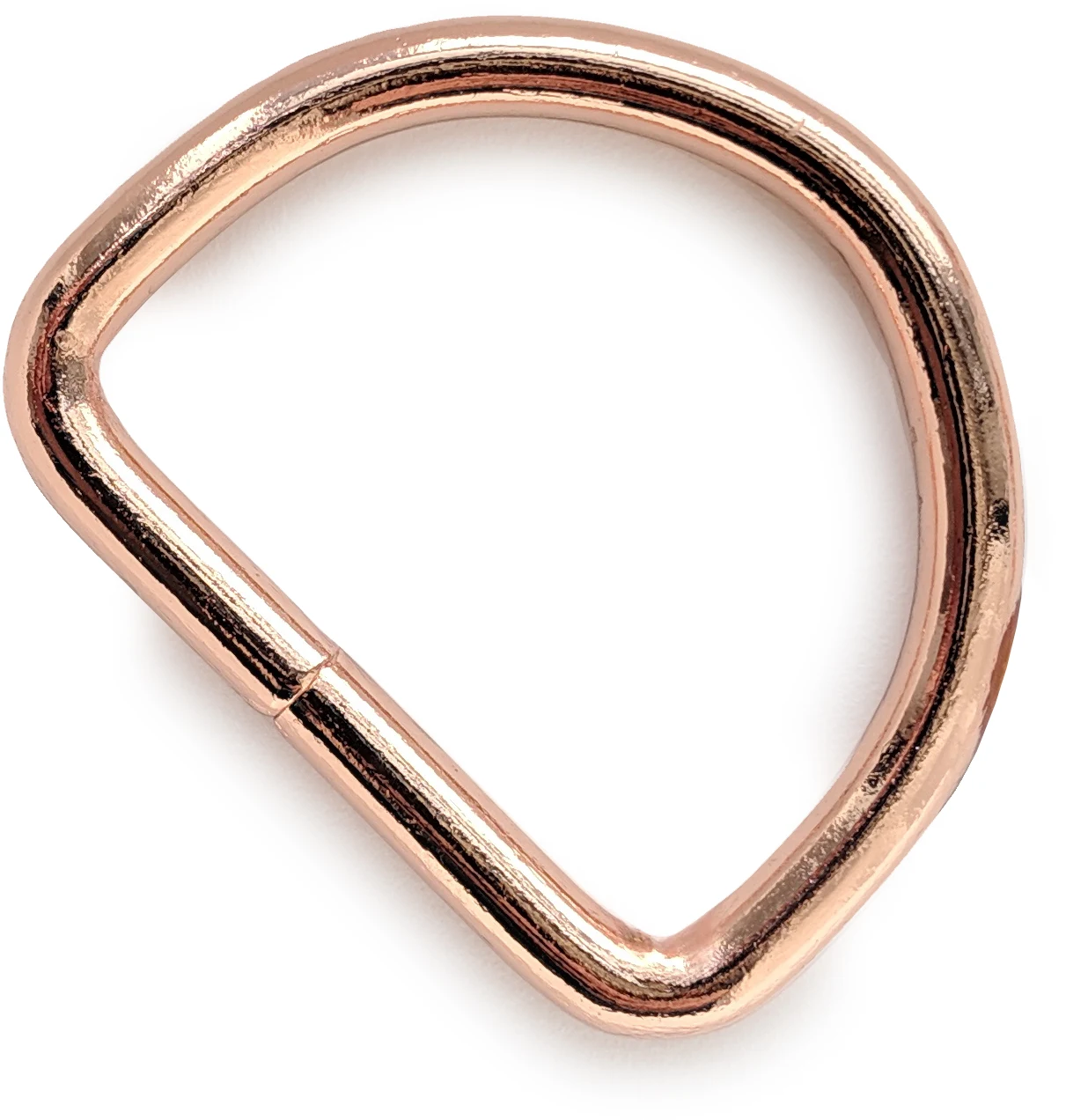
O-rings are perfectly round, like a lowercase o, while D rings are shaped like a D – a half circle with a straight side.
D RINGS – D rings are used in applications where the ring should not slide freely through the material. The sharp bend on either side of the straight bar of the D ring keeps the D-ring in place. The sharper that corner, the less likely the D ring is to shift in position. D rings made by casting molten metal into a mold have sharper corners than R rings made by bending heavy gauge wire around a form.
O Rings – O-rings however, allow for the material to freely move around the ring – perfect for applications that require flexibility.
Tip: the sharper the corners of the D-ring, the less likely it is that webbing will shift out of place.
Non-Welded Rings
Light-duty O-rings and D- rings are sometimes hard to find because, as a weaker style construction, they are less popular for many applications. However, a non-welded ring may be perfect for some projects – especially projects that can benefit from a D ring or O ring that will break away under extreme pressure.
Non-welded rings are created when manufacturers bend steel wire around a form to create either a D shape or a round O shape. This wire is usually coated with a thin layer of metal plating – usually zinc, chromium, or nickel.
Because this style of ring is not welded, the exposed ends of the cut wire are free to pull apart from each other under pressure. These exposed edges may also cause abrasion to the inner surface of an attached strap.
Welded D rings and O rings
This style of construction, a combination of affordability and security, is the most popular. These types of rings are created by bending steel wire, similar to the above process but typically using heavier wire. Once bent to shape around the O ring or D ring form, the exposed ends of the wire are welded together permanently. This secure weld adds strength to the D-ring and keeps it from losing its shape or popping open when held in tension.
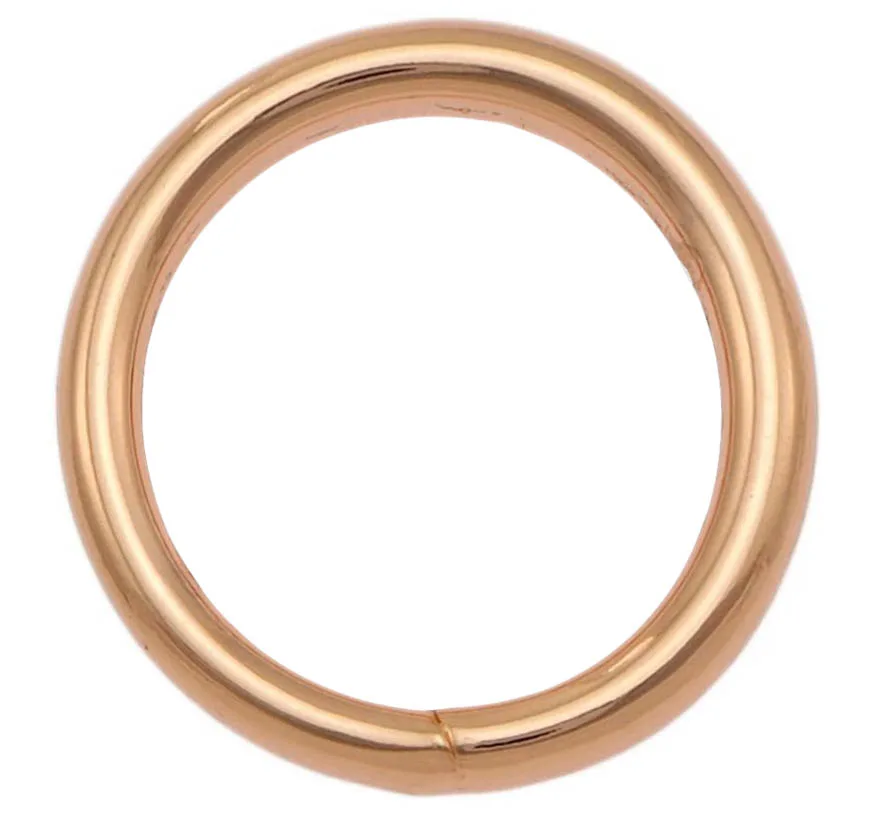
Cast D Rings and O Rings
Often preferred for clean lines, cast metal rings have a beautiful smooth finish with a clean design and sharp look. Cast rings are made by casting molten metal into a mold. Because the mold precisely finishes the shape, the finished look is often more symmetrical and modern looking. Cast metal rings may very occasionally have flaws from defects or damaged molds, so should be inspected at every step of production before being put into use.
Typically, cast hardware is created from zinc- a sturdy but malleable metal- and then plated with a shiny silver nickel coding. Many types of cast hardware are also available in solid brass (as this material casts in molds particularly well) but the cost of solid brass makes it unrealistic for most hobby crafts.
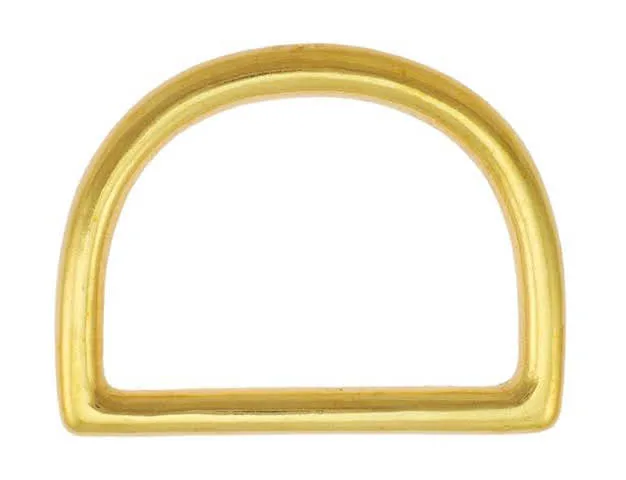
Cast zinc rings are appropriate for light and mid-duty applications but are not as durable as steel, so should not be used for high tension or heavy loads. Zinc hardware is perfect for handbags and luggage, collars and harnesses for small to medium dogs, and other miscellaneous light to medium-duty uses. Zinc is often used to make hardware slides.
Nickel Finish
A nickel finish appears as a silver, highly reflective metallic finish. It has some resistance to acids, alkalis, and rust but nickel-plated hardware is not suitable for applications where the hardware will come in contact with water or chemicals for prolonged periods.
Stainless Steel Hardware
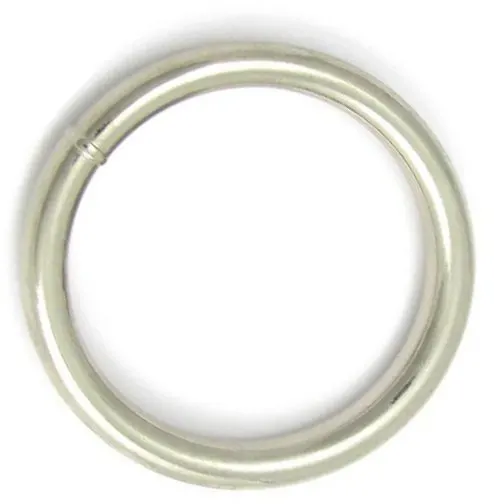
In the past decade, stainless steel hardware has become increasingly available and affordable for amateur craftspeople. Stainless steel hardware is created of an alloy made of nickel, chromium, manganese, and other metals which reduce its susceptibility to corrosion and rust.
Stainless steel O-rings and d-rings are appropriate for heavy-duty uses. When combined with quality strap goods and reinforced stitching, stainless steel rings are suitable for equestrian applications, large dogs, sledding, and for use in marine and water applications. Due to the bright, silver finish, stainless steel and zinc hardware can even be used to creatively wrap Christmas presents.

